Introduction
Winter can feel like a never-ending cycle of cold and darkness, especially for our furry friends. Rescue dogs, in particular, face unique challenges during this season. As temperatures drop, many pet parents return to work, leaving their loyal companions alone for longer stretches. This sudden change can trigger anxiety in dogs who have already experienced abandonment or trauma.
Imagine being left alone in a chilly house while your human is off enjoying the outside world. The struggle is real! But fear not—there are effective strategies to help ease your pup’s anxiety and create a cozy, secure environment at home.
In this article, we will outline the top strategies for reducing separation anxiety in rescue dogs this winter. From establishing a routine to employing calming aids, we’ll ensure your pup feels loved and safe, even when you’re away. With a little patience and creativity, you can help your furry friend navigate the winter months without the added stress of separation anxiety. After all, who says winter has to be ruff?

Summary
Separation anxiety is a common issue for many dogs, particularly rescue pups. These dogs often come from unstable backgrounds, making it more difficult for them to cope with being left alone. Understanding the causes of separation anxiety is crucial for developing effective strategies to help your furry friend.
This article will discuss practical solutions that can be implemented easily at home. We’ll look at the signs of separation anxiety and emphasize the importance of establishing a routine. Techniques such as desensitization, creating a safe space, and using calming aids will be covered in detail.
We’ll also highlight how regular exercise, mental stimulation, and socialization are vital in reducing anxiety levels. Personal stories and success anecdotes from dog owners will spark curiosity and illustrate that overcoming these challenges is possible.
By the end of this article, you’ll have a comprehensive toolkit to help your rescue dog thrive during winter. Let’s turn those anxious barks into joyful woofs and make this winter a season of comfort for both you and your furry companion!
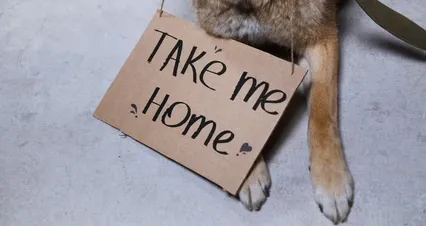
Understanding Separation Anxiety in Rescue Dogs
What is Separation Anxiety?
Separation anxiety is a condition where dogs experience intense distress when separated from their owners. This problem is particularly significant in rescue dogs. Many of these pups have faced abandonment or instability in their past lives. When left alone, they may feel fear and panic, leading to various distressing behaviors.
This anxiety often manifests in several ways. A dog might bark, howl, or engage in destructive behavior, such as chewing furniture or digging at doors. These actions stem from their emotional turmoil. Understanding separation anxiety is crucial for pet owners. It helps them recognize when their furry friend is in distress and take necessary steps to alleviate it.
Signs of Separation Anxiety
Separation anxiety can present itself through a range of behaviors. Common signs include excessive barking, whining, and howling. Dogs may also engage in destructive activities, like chewing shoes or scratching at doors. Accidents inside the house can occur, even with house-trained dogs.
However, some signs might be subtler. Dogs may pace or exhibit signs of distress before their owner leaves. They might refuse to eat or play when left alone. Observing these behaviors can help owners identify anxiety early. The sooner they recognize the signs, the quicker they can implement strategies to help their dogs.
Causes of Separation Anxiety
Several factors can contribute to separation anxiety in dogs. Many rescue dogs come from backgrounds of abandonment or trauma. These experiences can create a strong attachment to their new owners, leading to anxiety when they leave.
Additionally, dogs that lack proper socialization may struggle with being left alone. If they’ve always been surrounded by other dogs or people, solitude can be daunting. Sudden changes in routine, such as a new work schedule or moving homes, can also trigger anxiety. Understanding these causes allows owners to address the root of the problem, making it easier to help their furry companions.

Top Strategies for Reducing Separation Anxiety
Establishing a Routine
A consistent daily routine can work wonders for dogs with separation anxiety. Dogs thrive on structure and predictability. Establishing a regular schedule for feeding, walks, and playtime can help them feel secure.
Start by setting specific times for meals and outings. Keep these times consistent each day. This predictability helps your dog anticipate when you’ll be home, reducing anxiety. Also, try to maintain a calm atmosphere during your departures and arrivals. Excitement can heighten anxiety, so keeping greetings low-key is essential.
Consider creating a visual schedule for your dog. Use pictures to represent different activities throughout the day. This method reinforces the routine and provides reassurance, making them feel more comfortable when you leave.
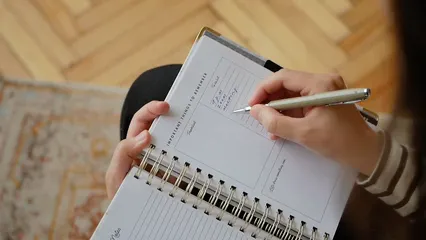
Desensitization Techniques
Desensitization is a powerful tool for helping dogs cope with separation anxiety. It involves gradually exposing your dog to the cues that signal your departure. Start with simple actions, like picking up your keys or putting on your shoes, without actually leaving.
Begin by performing these actions several times a day, but only for short periods. Your dog will start to associate these cues with calmness instead of anxiety. Next, gradually increase the duration of your absences. Start with just a few minutes and slowly extend that time. Always return while your dog is still calm, reinforcing positive behavior.
Use treats and praise when your dog remains relaxed during these exercises. Celebrate their small victories! This gradual process helps your dog build confidence and reduces their fear of being alone. With time, they’ll be better equipped to handle your departures.
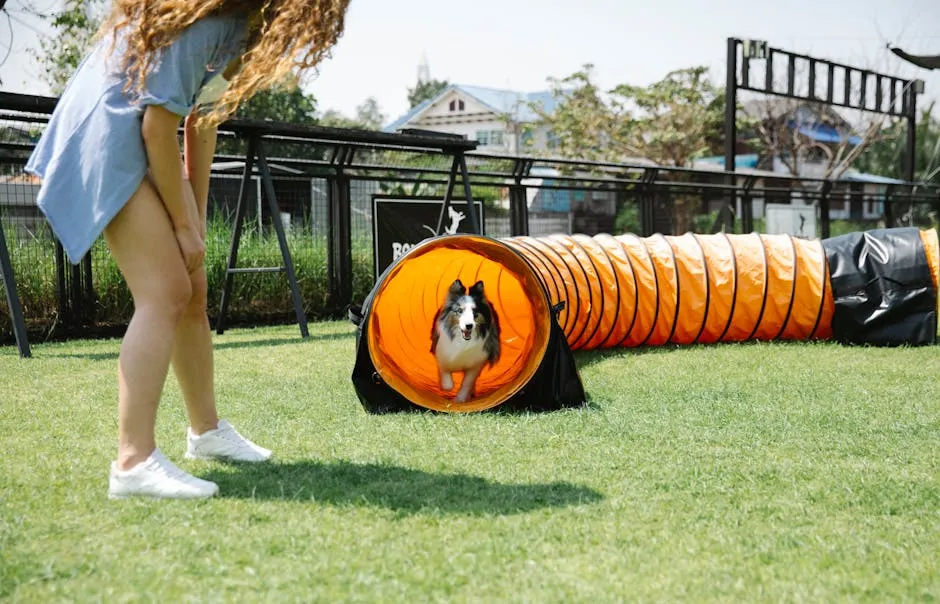
Creating a Safe Space
Creating a designated safe space for your rescue dog is crucial. This area serves as a cozy retreat, allowing your pup to feel secure when you’re away. A safe space can be a quiet room or a comfortable crate, depending on your dog’s preference.
Fill this area with comforting items. Start with soft blankets that carry your scent. Dogs find comfort in familiar smells. Add plush toys to give them something to cuddle with. They’ll appreciate having a furry companion while you’re away.
Consider using calming scents, too. Lavender and chamomile are excellent choices. These aromas can help soothe anxious pups. You can use essential oil diffusers or calming sprays specifically designed for dogs, like PetSafe Pheromone Calming Spray.
To further enhance your dog’s safe space, include interactive toys. Puzzle toys can keep them engaged during your absence, reducing boredom. Consider the Outward Hound Hide-A-Squirrel Puzzle Toy for some added fun. When your pup feels secure in their safe space, it can ease their anxiety and make those solo moments much less stressful.
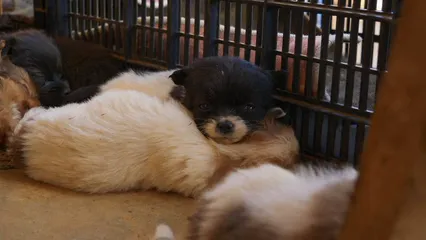
Exercise and Mental Stimulation
Physical and mental exercise are vital for alleviating anxiety. A tired dog is generally a happy dog, after all! Start each day with a good walk or run. Aim for at least 30 minutes for energetic breeds. This routine helps burn off excess energy, making them less prone to anxiety.
In addition to walks, engage your pup in fun activities. Try interactive games like fetch or tug-of-war. These games provide both physical exertion and mental stimulation. You can also introduce scent games. Hide treats around the house and let your dog sniff them out. It’s a fantastic way to engage their natural instincts.
Consider incorporating training sessions into your routine. Teaching new tricks or commands keeps their minds sharp. Use positive reinforcement to encourage your dog. This approach fosters a strong bond and boosts their confidence. A well-exercised and mentally stimulated dog is less likely to experience separation anxiety. And don’t forget to stock up on Dog Treats for Training to keep those training sessions rewarding!
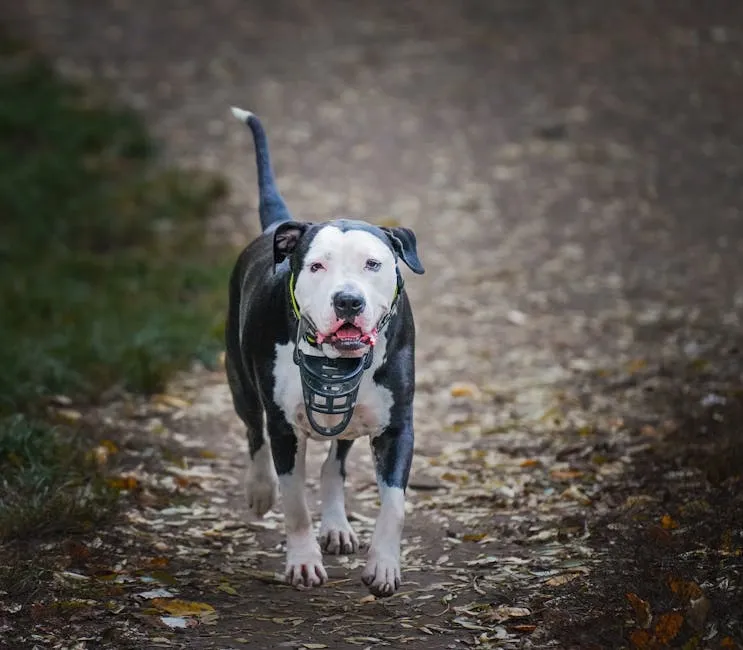
Use of Calming Aids
Calming aids can be a game changer for anxious dogs. There are various products available, such as pheromone diffusers and calming collars. These products release soothing scents that can help ease anxiety. Look for items specifically designed for dogs, as they often contain dog-friendly ingredients.
Thundershirts are another popular option. They apply gentle pressure, mimicking a warm hug. Many dog owners report positive results with these garments. You can find the Thundershirt Classic Dog Anxiety Jacket to see if it works for your pup!
Natural remedies can also be effective. Supplements containing CBD or other calming ingredients may help. Always consult your veterinarian before introducing new products. They can guide you on the best options for your pup. If anxiety persists despite your efforts, a vet visit is advisable to explore additional treatment options.
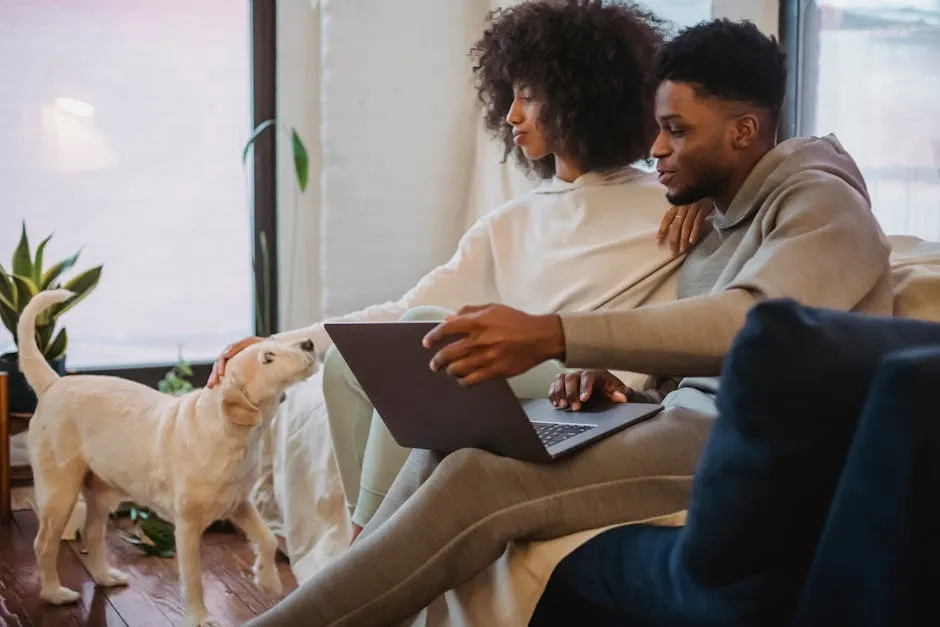
Socialization and Support
Socialization is critical for reducing separation anxiety in rescue dogs. Doggy daycare or regular playdates can help your pup build confidence and learn to enjoy time away from you. These environments expose them to other dogs and people, fostering a sense of community.
When looking for a daycare, consider visiting first. Ensure the facility is safe, clean, and staffed with caring professionals. Take time to introduce your dog gradually to the new environment. This approach allows them to acclimate at their own pace.
Additionally, seek out local support groups or training classes. Connecting with other dog owners can provide valuable resources and encouragement. Sharing experiences can lead to new strategies for managing anxiety. Remember, you’re not alone in this journey. With the right socialization and support, your dog can thrive, even in your absence.
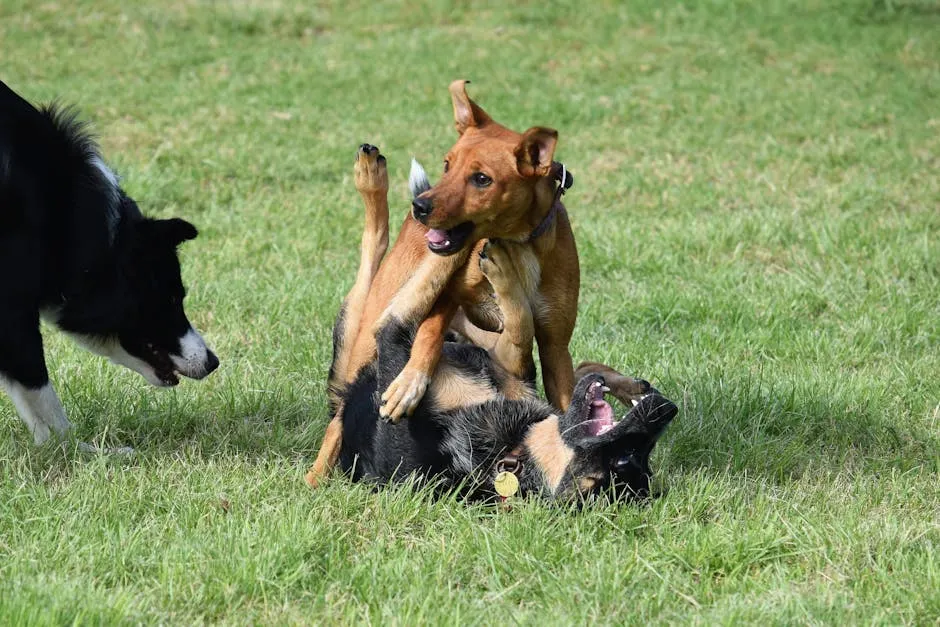
Personal Stories of Success
Separation anxiety can feel like an uphill battle for many dog owners. But what’s more uplifting than hearing success stories? Let’s share some heartwarming anecdotes from dog parents who turned their furry friends’ anxious barks into joyful woofs.
Take Amir and his dog, Leo. Amir adopted Leo, a pup who had been abandoned and was plagued by severe separation anxiety. Leo would scream, urinate inside, and even injure himself when left alone. Amir, determined to help, dived into research. Within six weeks, Leo learned to stay home alone for over six hours without panic! Amir used positive reinforcement, monitored Leo via a camera, and gradually increased his alone time. Today, Leo greets strangers instead of hiding. Amir’s story shines a light on the power of patience and love.
Then there’s Patty, who adopted Joe, a rescue dog with a tumultuous past. Joe spent years alone in a dirt dog run, leading to his fear of loud noises and separation. Patty invested in a sturdy crate, like the AmazonBasics Dog Crate, to keep Joe safe during her absences. She created a cozy environment inside, including a dog bed and a blanket. Over time, Joe learned to associate the crate with comfort. Now, he relaxes in it while Patty is out, and they are slowly increasing his freedom around the house.
In another example, a Reddit user shared how they fostered a husky with separation anxiety. To manage his distress, they used a steel crate, creating a safe space for him. They also implemented a routine, including long walks before leaving him. This approach helped the husky feel secure, eventually leading to a more relaxed demeanor and fewer anxious outbursts.
The journey of one dog owner involved a creative solution. They left a piece of clothing with their scent in their dog’s safe space. This simple act provided immense comfort during their absence. By mixing familiar smells with interactive toys, the dog began to associate their owner’s departure with positive experiences.
Lastly, a seasoned dog owner shared their method of incorporating short separations into their routine. They would leave the house for brief periods, gradually increasing the time apart. Using training commands like “stay” and rewarding good behavior, they helped their rescue dog build confidence. This approach transformed their anxious companion into a more independent and relaxed pooch.
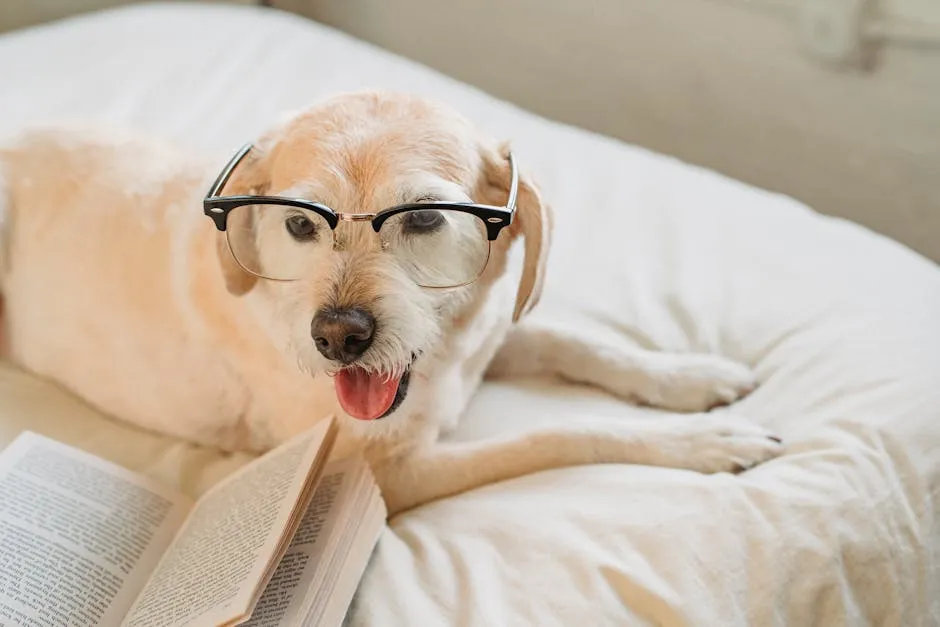
These success stories illustrate that with love, patience, and the right strategies, managing separation anxiety in rescue dogs is possible. Each dog is unique, and what works for one may not work for another. However, the common thread is that commitment and understanding can lead to positive outcomes. So, grab a cup of cocoa, get cozy with your furry friend, and remember: every wag of the tail is a step towards a happier winter together!
Conclusion
Managing separation anxiety in rescue dogs during winter requires patience, understanding, and the right strategies. By implementing a combination of routine, desensitization techniques, exercise, and calming aids, you can help your furry friend feel secure and loved.
Start with a consistent daily routine. Dogs thrive on predictability, which eases their anxiety. Use gradual desensitization to help them adjust to your departures. Short absences build their confidence over time.
Physical exercise is essential. A tired dog is a happy dog! Engage your pup in brisk walks or fun games before you leave. This will help reduce their anxiety and give them a sense of accomplishment.
Consider calming aids like pheromone diffusers or Thundershirts for additional support. These tools, combined with your unwavering love, can make a significant difference.
Remember, every dog is unique, and what works for one may not work for another. Monitor their behavior, stay patient, and don’t hesitate to seek professional help if needed. Understanding the intricacies of their anxiety is key to finding the right solution.
With time and dedication, you can turn this winter into a positive experience for both you and your rescue dog. Embrace the journey, and let those joyful barks fill your home with warmth and love!
FAQs
What is the best age to start training my rescue dog for separation anxiety?
Training should begin as soon as you adopt your rescue dog. Early intervention is crucial. Puppies are particularly impressionable. Starting young helps them adapt better to being alone. However, older dogs can also learn new tricks. Consistent training is key! Use positive reinforcement techniques to build trust. This approach allows them to associate your departures with calmness and comfort. Remember, the sooner you start, the better their chances of overcoming anxiety.
Are there specific breeds more prone to separation anxiety?
Yes, certain breeds are known to be more vulnerable to separation anxiety. Breeds like Labrador Retrievers, German Shepherds, and Cocker Spaniels often struggle with being left alone. These dogs tend to form strong attachments to their owners. Other breeds, such as Border Collies and Toy breeds, may also exhibit higher anxiety levels. However, individual temperament and past experiences play significant roles too. It’s essential to understand your dog’s unique needs, regardless of their breed.
When should I consult a veterinarian about my dog’s anxiety?
Consult a veterinarian if your dog shows persistent or severe anxiety signs. Look for excessive barking, destructive behavior, or accidents in the house. If their anxiety interferes with daily life, it’s time to seek help. Also, if you notice physical symptoms like trembling or excessive drooling, don’t hesitate to reach out. A vet can help rule out medical issues and recommend tailored behavioral strategies or medications. Early intervention can lead to effective management of your dog’s anxiety.
Can separation anxiety be cured?
While separation anxiety may not be entirely cured, it can certainly be managed and improved over time. Many dogs respond well to structured training and environmental modifications. Techniques such as desensitization, creating a safe space, and engaging in regular exercise can make a big difference. With patience and commitment, most dogs can learn to feel more secure when left alone. Remember, every dog is unique, and progress takes time. Celebrate small victories along the way!
Please let us know what you think about our content by leaving a comment down below!
Thank you for reading till here 🙂
All images from Pexels





